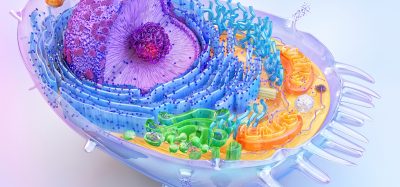New study may improve enzyme replacement therapy for Pompe patients
Posted: 24 August 2021 | Anna Begley (Drug Target Review) | No comments yet
Researchers have developed a new method that could make enzyme replacement therapy more efficient for Pompe disease treatment.


The only available treatment for Pompe disease is enzyme replacement therapy that must be injected regularly, sometimes every few days, for life and treatment can cost hundreds of thousands of dollars a year. However, researchers from the University of Maryland, US, have developed a method that could make enzyme replacement therapy more efficient, less expensive and less frequent.
Currently, treatment for Pompe disease involves injecting large amounts of acid alpha-glucosidase (GAA), a critical enzyme that is lacking in patients with Pompe disease, into the bloodstream of patients with the hope that some of it will get into the cells and clean up the built-up glycogen. Generally, only a small amount of the enzyme reaches the cellular machinery where it is needed.
“As a result of this inefficiency, a large quantity of the enzyme needs to be injected and the cost can go up to a half-million dollars per patient a year,” said corresponding author Professor Lai-Xi Wang. “We have developed a simple method of modifying the enzyme that demonstrated much enhanced receptor binding, cellular uptake and glycogen degrading activity in cells.”
Biomarkers aren’t just supporting drug discovery – they’re driving it
FREE market report
From smarter trials to faster insights, this report unpacks the science, strategy and real-world impact behind the next generation of precision therapies.
What you’ll unlock:
- How biomarkers are guiding dose selection and early efficacy decisions in complex trials
- Why multi-omics, liquid biopsy and digital tools are redefining the discovery process
- What makes lab data regulatory-ready and why alignment matters from day one
Explore how biomarkers are shaping early drug development
Access the full report – it’s free!
To develop their method, Wang and his team studied the chemical synthesis and binding properties of various molecules and discovered a ligand that was easily recognised by a specific receptor in the cellular transport system. This system carries compounds from the bloodstream across the cell membrane into the machinery where glycogen is broken down into glucose.
Once they found the ligand, the team developed a simple method to attach it to the GAA enzyme. Working with colleagues from the US National Institutes of Health (NIH), the researchers tested their engineered GAA enzyme with the attached ligand in model cells and found that it was much more efficient at delivering GAA to the target machinery than the current enzyme replacement therapy.
“Our method could dramatically reduce the amount of enzyme and maybe also the frequency of injections needed to treat Pompe disease, because it ensures that more of the GAA enzyme gets into the cells’ machinery where it can do its job,” said lead author Dr Xiao Zhang.
The team are now doing further studies with collaborators at the NIH to evaluate the effects of the combined GAA-ligand therapy in animals with hopes of eventually moving to human trials in the future.
The study was published Chemical Science.
Related topics
Drug Targets, Enzymes, Ligands, Microbiology, Molecular Biology, Molecular Targets, Small molecule, Target Molecule, Targets, Therapeutics
Related conditions
Pompe disease
Related organisations
Maryland University, National Institute of Health (NIH)
Related people
Dr Xiao Zhang, Professor Lai-Xi Wang








